#Cassini space craft
Text
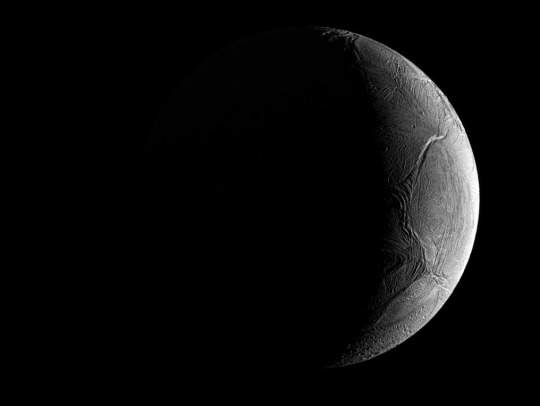
SPACEMAS DAY 20 ✨🪐🌎☄️☀️🌕
‼️ I can’t believe there’s only 5 more days of this!!! Make sure to send me any of your favourite images for a chance to be featured!! ‼️
Peering from the shadows, Saturn’s inner moon Enceladus is front and centre in this image from the Cassini spacecraft. North is up in the scene captured during November 2016 as Cassini's camera was pointed in a nearly sunward direction about 130,000 kilometers from the moon's bright crescent. In fact, the moon reflects over 90 percent of the sunlight it receives, giving its surface about the same reflectivity as fresh snow. Only about 500 kilometers in diameter, Enceladus is a surprisingly active moon. Data and images collected during Cassini's flybys have revealed water vapor and ice grains spewing from south polar geysers and evidence of an ocean of liquid water hidden beneath the moon's icy crust.
Image Credit & Copyright: NASA
#astronomy#space#science#universe#Cassini#moon#Saturn#enceladus#Saturn moon#icy#reflective#surface#sun#sunlight#Cassini space craft#Cassini Saturn#follow#like#reblog#the first star#the first starr#thefirststar#thefirststarr#nasa#apod#tumblr#blog#space blog#spacemas#day 20
26 notes
·
View notes
Photo



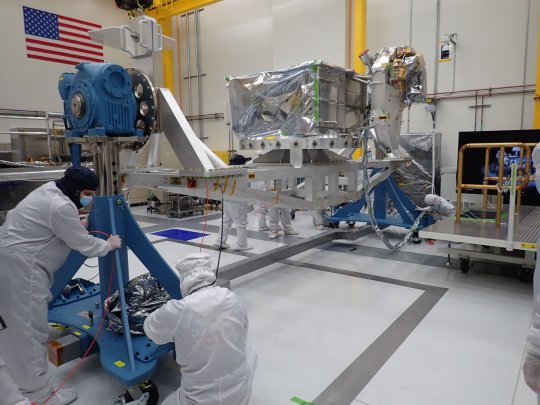
NASA’s Europa Clipper Spacecraft Kicks Assembly Into High Gear The spacecraft will occupy the main production facility of NASA’s Jet Propulsion Laboratory as it prepares for its 2024 launch to Jupiter’s moon Europa. The core of NASA’s Europa Clipper spacecraft has taken center stage in the Spacecraft Assembly Facility at the agency’s Jet Propulsion Laboratory in Southern California. Standing 10 feet (3 meters) high and 5 feet (1.5 meters) wide, the craft’s main body will for the next two years be the focus of attention in the facility’s ultra-hygienic High Bay 1 as engineers and technicians assemble the spacecraft for its launch to Jupiter’s moon Europa in October 2024. Scientists believe the ice-enveloped moon harbors a vast internal ocean that may have conditions suitable for supporting life. During nearly 50 flybys of Europa, the spacecraft’s suite of science instruments will gather data on the moon’s atmosphere, surface, and interior – information that scientists will use to gauge the depth and salinity of the ocean, the thickness of the ice crust, and potential plumes that may be venting subsurface water into space. Several of Europa Clipper’s science instruments already have been completed and will be installed on the spacecraft at JPL. Most recently, the plasma-detection instrument, called the Plasma Instrument for Magnetic Sounding, and the Europa Imaging System wide-angle camera arrived from the Johns Hopkins Applied Physics Laboratory (APL), in Laurel, Maryland. The thermal-emission imaging instrument, called E-THEMIS, and the ultraviolet spectrograph, Europa-UVS, have already been installed on the spacecraft’s nadir deck, which will support many of the instrument sensors by stabilizing them to ensure they are oriented correctly. Fabricated at JPL, this key piece of hardware will soon move into the Spacecraft Assembly Facility’s High Bay 1, the same clean room where historic missions such as Galileo, Cassini, and all of NASA’s Mars rovers were built. Also moving soon to High Bay 1 will be the aluminum electronics vault, which will be bolted to the main body of the spacecraft, protecting the electronics inside from Jupiter’s intense radiation. The electronics enable Europa Clipper’s computer to communicate with the spacecraft’s antennae, science instruments, and the subsystems that will keep them alive. Bright copper cabling snaking around the orbiter’s aluminum core contains thousands of wires and connectors handcrafted at APL. If placed end to end, the cabling would stretch almost 2,100 feet (640 meters) – enough to wrap around a U.S. football field twice. Inside the core are Europa Clipper’s two propulsion tanks. The fuel and oxidizer they’ll hold will flow to an array of 24 engines, where they will create a controlled chemical reaction to produce thrust in deep space. By the end of 2022, most of the flight hardware and the remainder of the science instruments are expected to be complete. Then, the next steps will be a wide variety of tests as the spacecraft moves toward its 2024 launch period. After traveling for nearly six years and over 1.8 billion miles (2.9 billion kilometers), it will achieve orbit around Jupiter in 2030. More About the Mission Missions such as Europa Clipper contribute to the field of astrobiology, the interdisciplinary research field that studies the conditions of distant worlds that could harbor life as we know it. While Europa Clipper is not a life-detection mission, it will conduct a detailed exploration of Europa and investigate whether the icy moon, with its subsurface ocean, has the capability to support life. Understanding Europa’s habitability will help scientists better understand how life developed on Earth and the potential for finding life beyond our planet. Managed by Caltech in Pasadena, California, JPL leads the development of the Europa Clipper mission in partnership with APL for NASA’s Science Mission Directorate in Washington. APL designed the main spacecraft body in collaboration with JPL and NASA’s Goddard Space Flight Center in Greenbelt, Maryland. The Planetary Missions Program Office at NASA’s Marshall Space Flight Center in Huntsville, Alabama, executes program management of the Europa Clipper mission.
31 notes
·
View notes
Text
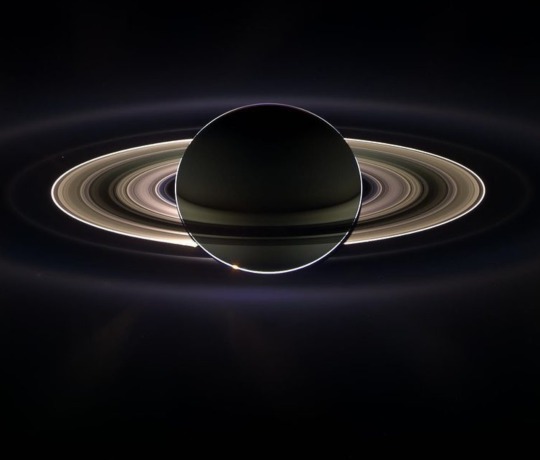
This is a real picture of Saturn taken by the Cassini space craft from behind which backlights the rings.
seasoflife
7 notes
·
View notes
Note
Happy astromonday!!
Ending the Saturn asks I wanted to talk about the Cassini-Huygens mission.
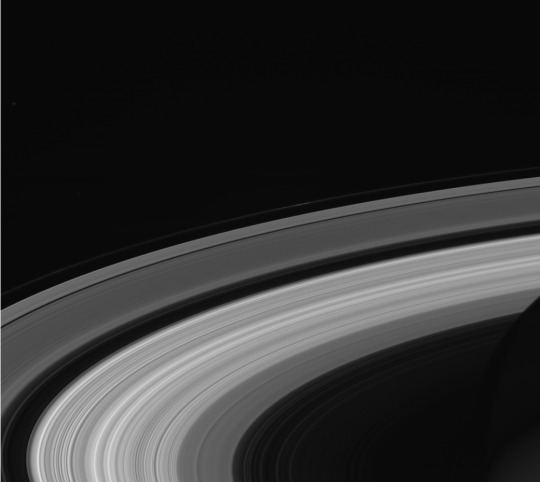
Named for the two 17th century astronomers who adored him, it launched in 1997, arriving at Saturn in 2003, and ended in 2017, a month shy of 20 years. It was the first mission reaching Saturn since Voyager in the 1980s, to learn more about him and gain understanding about the solar system and the beginnings of life.
This mission has given us so much information, including the discovery of six new moons, landing a probe on Titan and sending us pictures of his surface (the first ever), finding evidence of water on Enceladus, and more information on the rings; plus so many stunning pictures. All the beautiful photos of Saturn in the last 20 years have been thanks to this mission. But the ending was for me the most emotional thing to learn.
In 2017, recognising that the craft was running out of fuel, but also not wanting it to interfere with his intricate moon and ring systems, it was decided to send Cassini on one final mission: directly into Saturn's atmosphere. This mission was done with the view of gaining information about his atmosphere until Cassini stopped responding, as it would have destroyed Cassini from heat and pressure. The picture today is one of the last from the craft.
I can't help thinking of the engineers, putting love and hard work and craftsmanship into a machine which they know they will never see again, something that gave us so much information but can't ever return and there is no physical keepsake of, except in Saturn. I found it kind of haunting to think about, the love these people have for their missions, sending them to space knowing they will never get them back.
The next planned mission around Saturn is called Dragonfly. Due to launch in 2027 it will go to Titan, to learn more about his biochemistry and gain understanding on life.
I hope you've liked this little mini series on Saturn!! Have a fantastic day!! 🪐
This is the most gorgeous and heartbreaking astromonday ever
“Named for the two 17th century astronomers who adored him” stop im already too soft over planets
The engineers sending off their projects that they poured so much love into and it’s all just on Saturn and they can never see it again I just

2 notes
·
View notes
Text


The spawn of listening to Starboy by The Weeknd on repeat for 3 hours at 2AM. Came from an animated video idea I had to aforementioned song, storyboarding was completed but animation will likely never see the light. He has a name untranslatable in human language, but a character that found him calls him Cassini because she’s “head empty, only Astronomy.”
🪐
Crashed to Earth in an escape pod, origin unknown, species unknown. His ‘hair’ is mystery matter going down his back, it causes a mild static sensation when contact is made, and feel like mist to the touch, constantly glowing and undulating like flames in slo-mo. Skin is like buttery leather but strong enough to resist puncture by conventional projectiles, and is so black it does not reflect light, but absorbs it.
Markings are a colorful gradient, but ‘hair’ colors constantly fluctuate with borealis-like effects. Eyes are honeydew and gold, appear empty until the viewed in close proximity. He stands 8’4”, and is capable of telepathic communication but learns language at a moderate pace, he prefers to remain mute yet will vocalize.
He is called “Cassini” by the character who found him, a young woman named Apolline, when she viewed his incoming atmospheric trajectory from the direction of Saturn during a star-gazing session she initiated after work. She only knows he escaped an attacked space-fairing craft by an unknown enemy, after he told her his story by clasping her head and transmitting images of the event. His telepathic powers can cause symptoms of fainting, labored breathing, disorientation, nosebleeds, and brief involuntary spasms.
He’s shown a heavy favoritism for fruit, no interest in red meat but will sometimes consume fish and mollusks if offered. Cannot safely consume dairy.
He is able to predict the motions of an opponent 5 seconds before it happens, sports incredible strength and has the ability to perform elevated jumps over a mile in length and in height. Should he so choose, he is capable of detecting human ailments such as cancer, diseases, and natural hormonal cycles, with olfactory senses 2x more sensitive than an earth canine.
He is generally non-reactive to human music, but is trying to learn the significance behind it in human culture as he sees Apolline enjoy it. He’s rather dry-humored, can be standoffish, and outwardly dismissive regardless of the situation unless it is dire. He is otherwise calm, and he does express a willingness to teach and will openly offer, as he is willing to learn of serious matters. He also shows favoritism and trust for Apolline, and understands he’s the purpose behind her secrecy about his existence once he gets a firsthand example of human aggression towards a foreign and unknown arrival. She is actively looking into constructing a craft capable of getting him off the planet.
Enjoy the shitty sketches and bad anatomy. These are from 2016.
2 notes
·
View notes
Note
Happy astromonday!!
Ending the Saturn asks I wanted to talk about the Cassini-Huygens mission.

Named for the two 17th century astronomers who adored him, it launched in 1997, arriving at Saturn in 2003, and ended in 2017, a month shy of 20 years. It was the first mission reaching Saturn since Voyager in the 1980s, to learn more about him and gain understanding about the solar system and the beginnings of life.
This mission has given us so much information, including the discovery of six new moons, landing a probe on Titan and sending us pictures of his surface (the first ever), finding evidence of water on Enceladus, and more information on the rings; plus so many stunning pictures. All the beautiful photos of Saturn in the last 20 years have been thanks to this mission. But the ending was for me the most emotional thing to learn.
In 2017, recognising that the craft was running out of fuel, but also not wanting it to interfere with his intricate moon and ring systems, it was decided to send Cassini on one final mission: directly into Saturn's atmosphere. This mission was done with the view of gaining information about his atmosphere until Cassini stopped responding, as it would have destroyed Cassini from heat and pressure. The picture today is one of the last from the craft.
I can't help thinking of the engineers, putting love and hard work and craftsmanship into a machine which they know they will never see again, something that gave us so much information but can't ever return and there is no physical keepsake of, except in Saturn. I found it kind of haunting to think about, the love these people have for their missions, sending them to space knowing they will never get them back.
The next planned mission around Saturn is called Dragonfly. Due to launch in 2027 it will go to Titan, to learn more about his biochemistry and gain understanding on life.
I hope you've liked this little mini series on Saturn!! Have a fantastic day!! 🪐
I loved this little Saturn series!! It was so cool and really interesting, and it’s made Saturn maybe my favorite planet
1 note
·
View note
Note
Happy astromonday!!
Ending the Saturn asks I wanted to talk about the Cassini-Huygens mission.

Named for the two 17th century astronomers who adored him, it launched in 1997, arriving at Saturn in 2003, and ended in 2017, a month shy of 20 years. It was the first mission reaching Saturn since Voyager in the 1980s, to learn more about him and gain understanding about the solar system and the beginnings of life.
This mission has given us so much information, including the discovery of six new moons, landing a probe on Titan and sending us pictures of his surface (the first ever), finding evidence of water on Enceladus, and more information on the rings; plus so many stunning pictures. All the beautiful photos of Saturn in the last 20 years have been thanks to this mission. But the ending was for me the most emotional thing to learn.
In 2017, recognising that the craft was running out of fuel, but also not wanting it to interfere with his intricate moon and ring systems, it was decided to send Cassini on one final mission: directly into Saturn's atmosphere. This mission was done with the view of gaining information about his atmosphere until Cassini stopped responding, as it would have destroyed Cassini from heat and pressure. The picture today is one of the last from the craft.
I can't help thinking of the engineers, putting love and hard work and craftsmanship into a machine which they know they will never see again, something that gave us so much information but can't ever return and there is no physical keepsake of, except in Saturn. I found it kind of haunting to think about, the love these people have for their missions, sending them to space knowing they will never get them back.
The next planned mission around Saturn is called Dragonfly. Due to launch in 2027 it will go to Titan, to learn more about his biochemistry and gain understanding on life.
I hope you've liked this little mini series on Saturn!! Have a fantastic day!! 🪐
happy astromonday juno 💖
20 years!! that's so impressive!! the ending of every mission that is sent but can't be recovered is very heartbreaking in a way, they are definitely like the sons of these engineers
I've loved the Saturn series 🥰 thank you so much for sharing with us🪐
1 note
·
View note
Text
Beyond Space: Traveling-Wave Tubes Travel Far - Technology Org
New Post has been published on https://thedigitalinsider.com/beyond-space-traveling-wave-tubes-travel-far-technology-org/
Beyond Space: Traveling-Wave Tubes Travel Far - Technology Org
Electronic components designed for NASA see use in space satellite systems and ground applications.
An engineer works on a Voyager spacecraft’s high-gain antenna dish. A component necessary to transmitting data on the Voyager 2 spacecraft, the traveling-wave tube, is still functioning over 45 years later. Image credit: NASA
Forty-five years ago, the Voyager 2 spacecraft launched on a mission to visit the outer planets. One vital component of the craft that still works is the key to getting data as it leaves the solar system.
But this piece of the now-interstellar spacecraft, the traveling-wave tube (TWT), has also become a necessary component for utilizing microwaves in several applications back on Earth. For example, satellite radio spacecraft use the amplification power of TWTs, and thanks to NASA’s help, listeners have coverage over all of North America and receive better sounding audio.
Apollo 12 astronaut Charles Conrad examines the television camera on the Surveyor 3 lunar probe. To have reliable transmissions during the Surveyor program, Hughes Corporation worked to miniaturize traveling-wave tubes, which are used to boost the power of radio signals. Image credit: NASA
Wherever you see a specialized microwave radio transmitter, there’s usually a traveling-wave tube somewhere within. Traveling wave tubes were initially created during the 1940s and were instrumental to the development of technologies like radar.
Like the cathode-ray tube in an old television, the traveling-wave tube works due to the movement of electrons within it: Inside a vacuum tube, a stream of electrons is fired from one end of the tube, which causes movement back and forth between electrodes on either side of the tube. A spiral of wire wraps around the path of the beam, and a radio signal is passed through it.
The movement of electrons synchronizes with the radio frequency, boosting the signal. All-in-one traveling-wave tube units that include a power source gain the additional moniker of “amplifier.”
In the early 1960s, Hughes Space and Communications Group received contracts from NASA’s Jet Propulsion Laboratory in Pasadena to build spacecraft for NASA’s Surveyor program, which successfully landed five robotic Moon missions before astronauts arrived during Apollo.
NASA electronics engineers Dale Force and Rainee Simons with an L3 (now Stellant) traveling-wave tube amplifier (TWTA). Today, Stellant is the only company making space-rated TWTAs and has several private sector customers in addition to NASA. Image credit: NASA
To maintain communications 238,000 miles from Earth, these landers’ transmitters needed massive amounts of amplification, with the additional constraint of having to fit on a small spacecraft. When Surveyor 1 landed on June 2, 1966, it was able to send signals carrying television images of the Moon’s surface back to Earth, paving the way for astronauts to land there a few years later.
Throughout the 1970s and 1980s, Hughes supplied the traveling wave tubes for every deep space mission, working to the exacting standards that NASA set, including the two Voyager spacecraft, as well as the Galileo and Cassini missions to Jupiter and Saturn respectively.
This work pushed the tube’s capabilities further. Thanks to NASA’s need for better ways to transmit data, modern traveling-wave tubes are smaller and able to amplify signals in a wider range of frequencies, such as the Ka band that space telescopes use to send back high-resolution imagery of distant stars and galaxies.
“If it wasn’t for NASA, the technology wouldn’t be anywhere near how advanced it is today,” said Nick Gritti, executive vice president of strategy and business development at Stellant Systems of Torrance, California, a successor company to Hughes.
In a Solid-State World, Vacuum Tubes Endure
It might seem strange that a component most associated with retro aesthetics is still relevant in modern technology, but there are several reasons why the venerable tube is better than alternatives.
“This is the last field where vacuum tubes thrive,” said Wayne Harvey, an engineer at JPL who’s worked on numerous spacecraft missions.
Much as some high-quality audio amplifiers still use vacuum tubes, microwave amplifiers made from tubes can have much better performance than other signal-strengthening methods developed with more conventional solid-state electronics.
“Solid-state electronics can’t keep up in the ranges we need,” said Rainee Simons, a microwave electronics engineer who specializes in traveling wave tubes at NASA’s Glenn Research Center in Cleveland. “The TWTA has much higher efficiency at the same frequencies.”
Keep on Traveling
After splitting from the larger Hughes Aircraft Company, Hughes Microwave Tubes continued to make these specialized components.
From the 1990s to the early 2000s, the company existed as part of Boeing before being sold to L3 Corporation, where the company was combined with another vacuum electronics manufacturer under the company’s portfolio, Litton Electron Devices. In 2021, the company split from the L3Harris conglomerate and became Stellant Systems, still operating at the same facility that Hughes did in the 1960s.
“I like to compare us to the island of Sicily,” said Gritti. “We’re the most conquered company in the world.”
Today, Stellant Systems is the only company in the United States that makes space-rated traveling wave tube amplifiers. In addition to being present in NASA spacecraft like the Lunar Reconnaissance Orbiter and the Kepler Space Telescope, Stellant amplifiers are also used in the National Oceanic and Atmospheric Administration’s Earth-observation satellites and in military applications like onboard radar for planes.
Compared to the enormous TWTs used in applications on the ground like Doppler weather radar, the space-based TWTs are miniature but still powerful enough to boost signals enough to transmit massive amounts of data from orbit.
Privately funded operations are also benefiting from Stellant’s decades of experience with miniaturizing traveling wave tubes. In late 2021, Stellant sold traveling wave tubes to SiriusXM for its next generation of satellite radio spacecraft. And machines that provide Lasik eye surgery use these tubes to ensure their beams are properly amplified.
“I think for TWTAs, it’s a sort of a leapfrog process,” Harvey said. “Sometimes we’re taking advantage of developments in the commercial world, sometimes those come back around to NASA missions. There’s a synergy there.”
In 2020, the traveling wave tube amplifier was added to the Space Foundation’s Space Technology Hall of Fame. And as of 2022, the TWT on Voyager 2 is still plugging away, transmitting data as it continues to make the journey through interstellar space.
“Nobody can explain why the Voyager TWT is still working,” said Harvey. “There’s going to be life for this technology for some time.”
Source: NASA
You can offer your link to a page which is relevant to the topic of this post.
#000#1980s#2022#Administration#aircraft#America#applications#astronauts#Astronomy news#audio#Boeing#Business#Business development#communications#craft#data#deep space#development#Developments#devices#earth#efficiency#electronic#Electronics#electrons#Engineer#engineers#eye#Featured Space news#Featured technology news
1 note
·
View note
Text
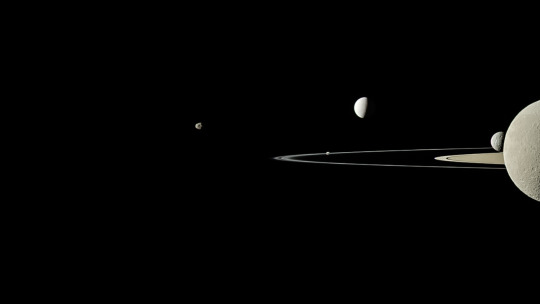


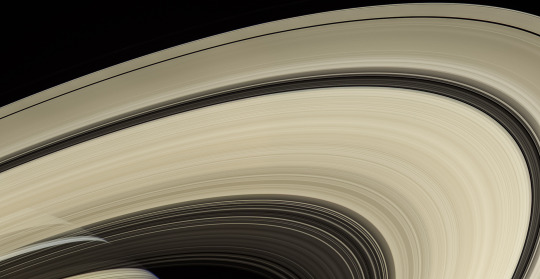
NASA Cassini-Huygens
Commonly called Cassini, was a space-research mission by NASA, the European Space Agency (ESA), and the Italian Space Agency (ASI) to send a space probe to study the planet Saturn and its system, including its rings and natural satellites. The Flagship-class robotic spacecraft comprised both NASA's Cassini space probe and ESA's Huygens lander, which landed on Saturn's largest moon, Titan. It was the fourth space probe to visit Saturn and the first to enter its orbit, where it stayed from 2004 to 2017. The two craft took their names from the astronomers Giovanni Cassini and Christiaan Huygens.
#cosmos#cassini#outer space#saturn#saturn's moons#nasa#dania rambles about shit#i'm doing some research rn and came across these images in my powerpoint notes from astronomy class during my third year so here they are#between architect / teacher / astronomer as my top careers it's hilarious I just landed on graphic design#there's a pipeline from using ms paint to this i know there is#gonna be an art teacher or a math or some type of science or shit even a history one if I don't finish the architect path#also like meterology is an interest bc of the movie twister and I've always liked looking at all the data charts
1 note
·
View note
Text
Saturn
Saturn is the 6th planet from the sun and the 2nd biggest planet in our solar system. Saturn is very unique among other planets in our planetary system due to its show stopping rings. however this is not the only planet with rings, thousands of other planets in our universe are surrounded by rings just like Saturn. The rings are made up of chunks of ice and rocks and they float surrounding the planet. The planet itself has no solid surface due to it being a gas planet and the air is mostly made up of hydrogen and helium, due to this Saturn cannot support life. Just like Jupiter, Saturn has many moons, Saturn has 53 moons that orbit around the planet to help control Saturn’s axis. Very few missions have visited the planet and only 3 spacecrafts have flown past Saturn but space craft cassini orbited Saturn 294 times from 2004 to 2007 and gave us very important information to help us guide us around the planet.
NASA (2019). Saturn. [online] Solar System Exploration: NASA Science. Available at: https://solarsystem.nasa.gov/planets/saturn/overview/.
0 notes
Note
Happy astromonday!!
Ending the Saturn asks I wanted to talk about the Cassini-Huygens mission.
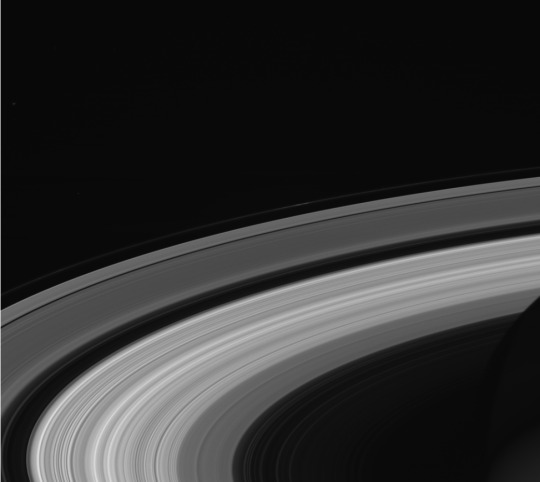
Named for the two 17th century astronomers who adored him, it launched in 1997, arriving at Saturn in 2003, and ended in 2017, a month shy of 20 years. It was the first mission reaching Saturn since Voyager in the 1980s, to learn more about him and gain understanding about the solar system and the beginnings of life.
This mission has given us so much information, including the discovery of six new moons, landing a probe on Titan and sending us pictures of his surface (the first ever), finding evidence of water on Enceladus, and more information on the rings; plus so many stunning pictures. All the beautiful photos of Saturn in the last 20 years have been thanks to this mission. But the ending was for me the most emotional thing to learn.
In 2017, recognising that the craft was running out of fuel, but also not wanting it to interfere with his intricate moon and ring systems, it was decided to send Cassini on one final mission: directly into Saturn's atmosphere. This mission was done with the view of gaining information about his atmosphere until Cassini stopped responding, as it would have destroyed Cassini from heat and pressure. The picture today is one of the last from the craft.
I can't help thinking of the engineers, putting love and hard work and craftsmanship into a machine which they know they will never see again, something that gave us so much information but can't ever return and there is no physical keepsake of, except in Saturn. I found it kind of haunting to think about, the love these people have for their missions, sending them to space knowing they will never get them back.
The next planned mission around Saturn is called Dragonfly. Due to launch in 2027 it will go to Titan, to learn more about his biochemistry and gain understanding on life.
I hope you've liked this little mini series on Saturn!! Have a fantastic day!! 🪐
hi juno happy astromonday!!!
i'm crying over cassini that's so cute and sad and haunting and !!!!!! they put so much work and effort and passion and love into discovery and they probably felt so attached to it but couldn't ever see it again. i hope dragonfly has such a successful mission and i hope it's getting so much love right now <3
1 note
·
View note
Note
Plants!
this is Cassini
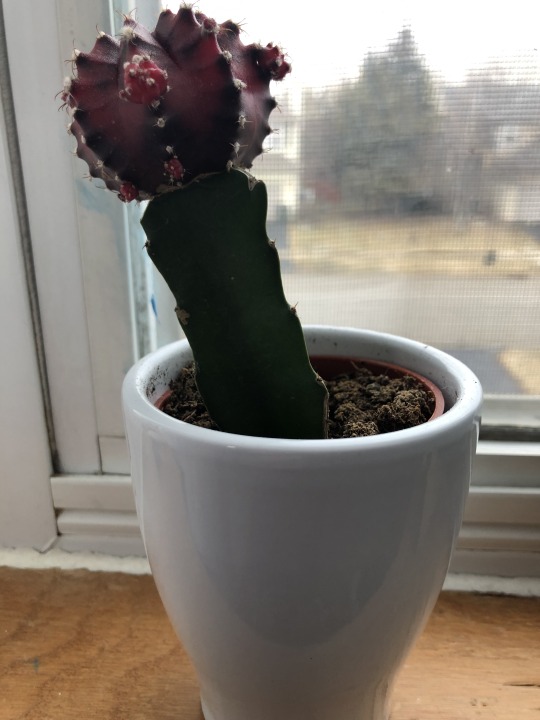
this is Huygens

They’re both moon cactuses and named after the Cassini-Huygens mission to Saturn. Cassini was the orbiting probe, and Huygens landed on Titan.
This is Mo, who is made of paper and was acquired from a craft fair, but is still cherished and has almost been watered several times.
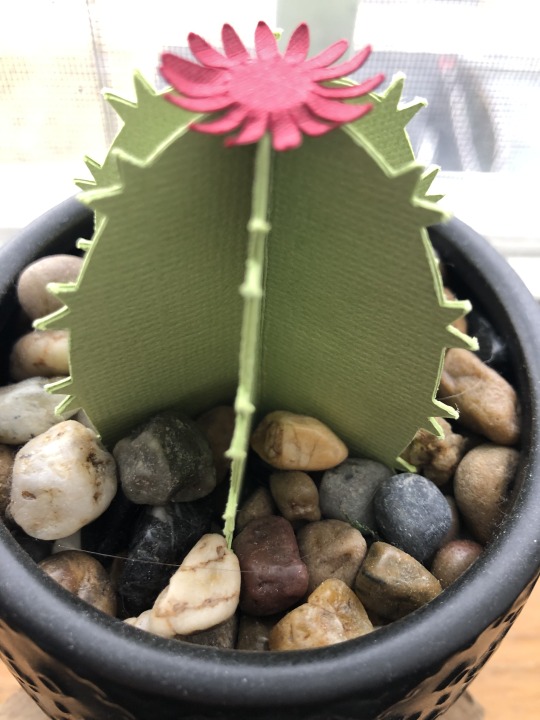
This is Queezle, who lives in a skull-shaped pot because my grandma went “oh Aelan likes weird shit, I’ll get hyr a succulent in a skull planter”

Here they are all together as one big nonbinary family because they’re my plants and we have zero gender in this household.

I love them, but my object permanence is terrble and I usually keep the curtain closed on their window, so it’s a good thing they’re all succulents or fake and can survive on me watering them when I remember that I have them.
they're MOON cactuses and they're named after SPACE things- ajshbdfjdsbhf i LOVE that /gen
also nonbinary plants are where it's AT fhjdbf, i want to get some plants of my ownnnn
#i have a felt succulent garden with little clay figurines in it#thank you for showing me your plants!!!!!!!!!!! they brightened my day ever so much dude <3
10 notes
·
View notes
Video
youtube
NASA's Europa Clipper spacecraft kicks assembly into high gear The core of NASA's Europa Clipper spacecraft has taken center stage in the Spacecraft Assembly Facility at the agency's Jet Propulsion Laboratory in Southern California. Standing 10 feet (3 meters) high and 5 feet (1.5 meters) wide, the craft's main body will for the next two years be the focus of attention in the facility's ultra-hygienic High Bay 1 as engineers and technicians assemble the spacecraft for its launch to Jupiter's moon Europa in October 2024. Scientists believe the ice-enveloped moon harbors a vast internal ocean that may have conditions suitable for supporting life. During nearly 50 flybys of Europa, the spacecraft's suite of science instruments will gather data on the moon's atmosphere, surface, and interior—information that scientists will use to gauge the depth and salinity of the ocean, the thickness of the ice crust, and potential plumes that may be venting subsurface water into space. Several of Europa Clipper's science instruments already have been completed and will be installed on the spacecraft at JPL. Most recently, the plasma-detection instrument, called the Plasma Instrument for Magnetic Sounding, and the Europa Imaging System wide-angle camera arrived from the Johns Hopkins Applied Physics Laboratory (APL), in Laurel, Maryland. The thermal-emission imaging instrument, called E-THEMIS, and the ultraviolet spectrograph, Europa-UVS, have already been installed on the spacecraft's nadir deck, which will support many of the instrument sensors by stabilizing them to ensure they are oriented correctly. Fabricated at JPL, this key piece of hardware will soon move into the Spacecraft Assembly Facility's High Bay 1, the same clean room where historic missions such as Galileo, Cassini, and all of NASA's Mars rovers were built. Also moving soon to High Bay 1 will be the aluminum electronics vault, which will be bolted to the main body of the spacecraft, protecting the electronics inside from Jupiter's intense radiation. The electronics enable Europa Clipper's computer to communicate with the spacecraft's antennae, science instruments, and the subsystems that will keep them alive. Bright copper cabling snaking around the orbiter's aluminum core contains thousands of wires and connectors handcrafted at APL. If placed end to end, the cabling would stretch almost 2,100 feet (640 meters)—enough to wrap around a U.S. football field twice. Inside the core are Europa Clipper's two propulsion tanks. The fuel and oxidizer they'll hold will flow to an array of 24 engines, where they will create a controlled chemical reaction to produce thrust in deep space. By the end of 2022, most of the flight hardware and the remainder of the science instruments are expected to be complete. Then, the next steps will be a wide variety of tests as the spacecraft moves toward its 2024 launch period. After traveling for nearly six years and over 1.8 billion miles (2.9 billion kilometers), it will achieve orbit around Jupiter in 2030. Missions such as Europa Clipper contribute to the field of astrobiology, the interdisciplinary research field that studies the conditions of distant worlds that could harbor life as we know it. While Europa Clipper is not a life-detection mission, it will conduct a detailed exploration of Europa and investigate whether the icy moon, with its subsurface ocean, has the capability to support life. Understanding Europa's habitability will help scientists better understand how life developed on Earth and the potential for finding life beyond our planet.
3 notes
·
View notes
Photo

Hello Saturn
Nice to meet you :)
#cassini#spaceship#space craft#saturn#planet#universe#cosmic#artwork#watercolor#Illustration#stellrmillr
1 note
·
View note
Photo
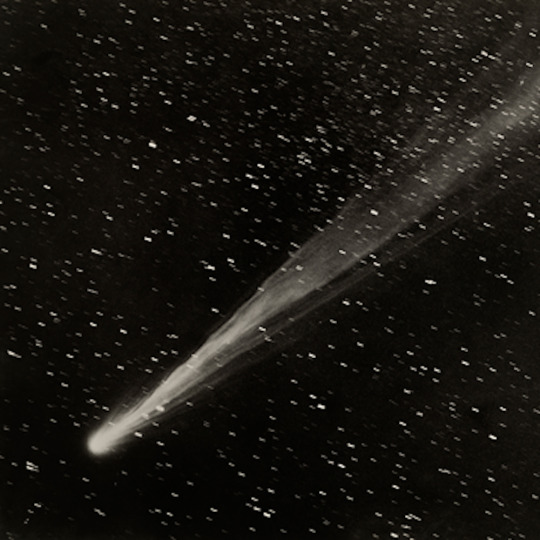
we are a way for the cosmos to know itself | a space playlist
moon – sleeping at last // cosmic pickup – jeff russo // under the milky way – bebe bettencourt // dream – alan watts // calling occupants of interplanetary craft – gro anita schønn // looking upwards – benn jordan // space oddity – chris hadfield // onward to the edge – symphony of science // pale blue dot – stellardrone // total solar eclipse – sleeping at last // to go beyond – enya // a thousand moons ago – johannes bornlöf // whirlpool galaxy – chris warner // waves of light – brian cox // eclipse – enya // creation du monde – vangelis // glorious dawn – carl sagan // in space – röyksopp // stardate – jerry goldsmith // cassini – curtis schweitzer
listen on spotify | image credit
#space#playlists#my playlists#spotify#there is a LOT more sleeping at last music on this playlist than the list suggests but it's not my fautl they make perfect music#i've been adding and removing and reordering this non stop so who knows whether all these songs will still be on it in a days time#but i;m posting now bc i'm impatient#and it's already public so
32 notes
·
View notes
Text
*shaking fist at the sky, letting out a warcry* FOR CASSINI
#18th#September#2017#September 18th 2017#cassini#i'm glad i was alive to experience cassini#you go little space craft#you will be remembered
1 note
·
View note